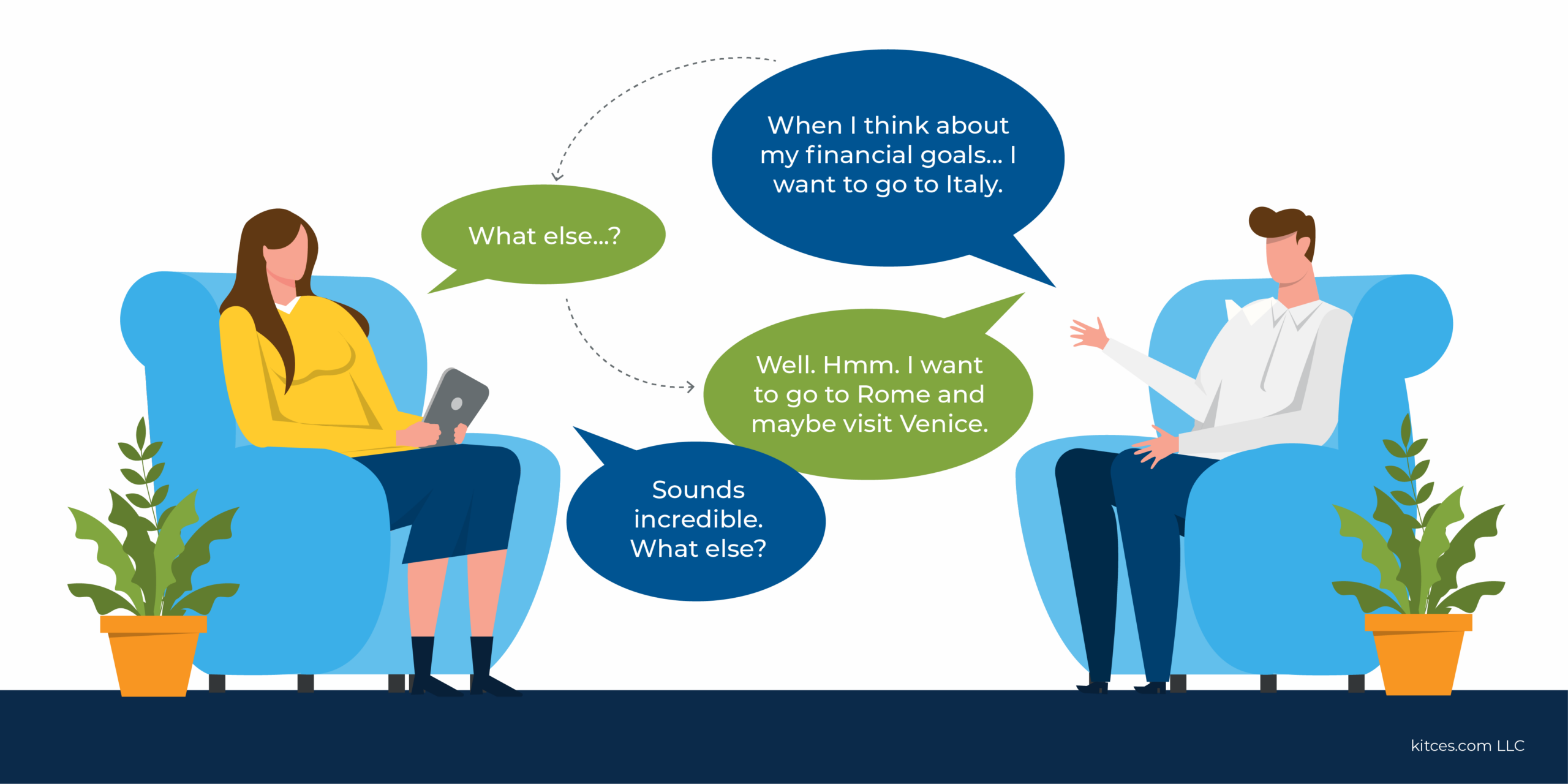In meetings with current and prospective clients, asking follow-up questions can be a valuable tool for uncovering information about the client’s underlying values, goals, and motivations… and for deepening the personal connection that drives the advisor-client relationship. But while it’s one thing to know that it’s good to ask questions, it’s another thing to know which questions to ask to make the client feel comfortable enough to open up and discuss the personal topics of money and finance.
Some coaches and experts are proponents of Root Cause Analysis, an approach centered around the question “Why?”: By starting with a basic question such as, “Why does money matter to you?”, then continuing to follow up with more “Why?” questions, the thinking goes that the advisor can drill further and further down until they get to the true root cause of the client’s values or motivations. But although this approach is appealing in its simplicity (since it only requires the advisor to supply the initial question, with all of the subsequent follow-up questions being variations of “Why”?), it isn’t always the most effective approach to drawing out information or building trust. Because while some clients may appreciate its directness in certain situations, in other cases, being asked “Why?” repeatedly can feel like an invasive and impersonal interrogation – or like being peppered with questions by an overly inquisitive toddler – and can result in an aversion to or annoyance with the advisor’s line of questioning.
An alternative approach that can be softer than the directness of “Why?” is to instead ask, “What else?”. Although both approaches have the goal of drawing out more information from the client and drilling deeper into their responses, the brain often interprets the 2 questions differently. Whereas “Why” can feel as though it presupposes a right or wrong answer – which can put the brain in an anxious state in trying to search for the most appropriate response – “What else?” can make the client feel more in charge of their response and less likely to feel judged on it, which can also put them more at ease and open the door to a more free-flowing conversation.
At a high level, asking “What else?” is about keeping the spotlight on the client and keeping them talking as they spin out the details of what’s on their mind. As they put their thoughts and ideas into language, they may encounter new realizations about their own goals or motivations that had never occurred to them before, and because there’s no pressure to supply a ‘correct’ answer, they’re encouraged to keep sharing and processing their thoughts out loud as they gradually get to what really matters to them. And at the end of a meeting, “What else?” can be a great way to wrap up and identify issues to follow up on or discuss at the next meeting!
The key point is that “What else?” is a means to achieve the same ends as a “Why?”-based line of questioning while sidestepping the potential issues that “Why?” can create. When meeting with prospects or clients in the early stages of the relationship – when the client may still be getting used to the idea of having an advisor and sensitive towards being judged for their financial behavior – “What else?” can create an open and comfortable environment for the client to explore their goals and values, which ultimately can make it easier for the advisor to focus their advice on what’s truly meaningful for the client.


